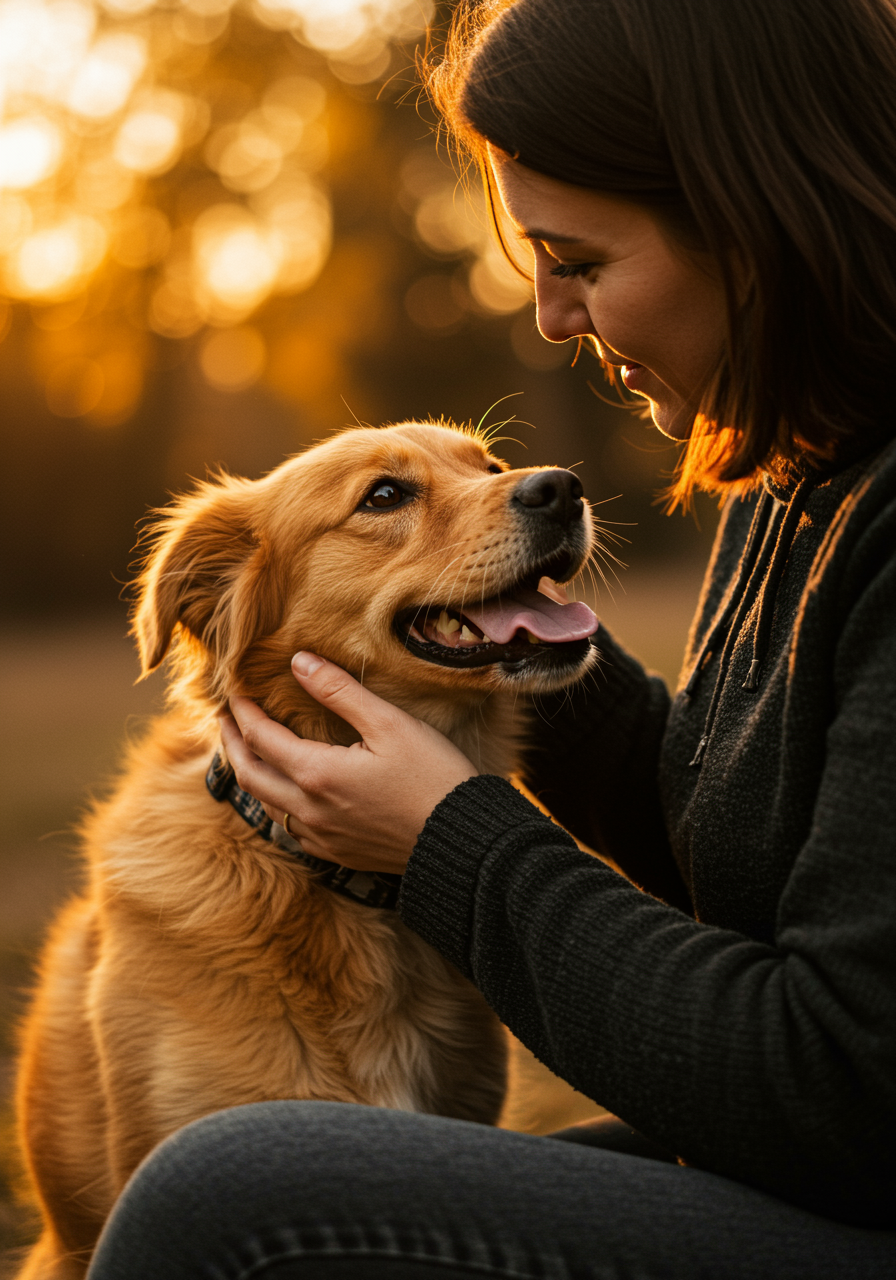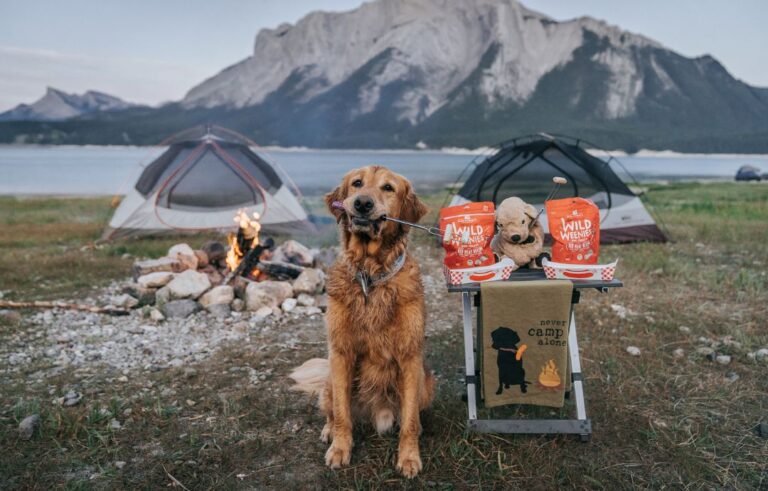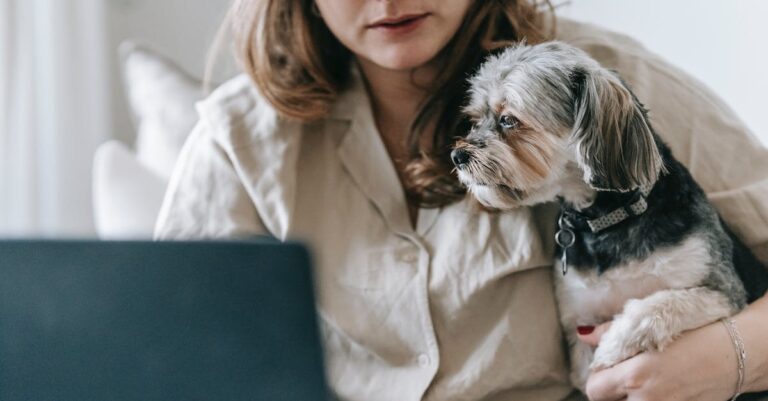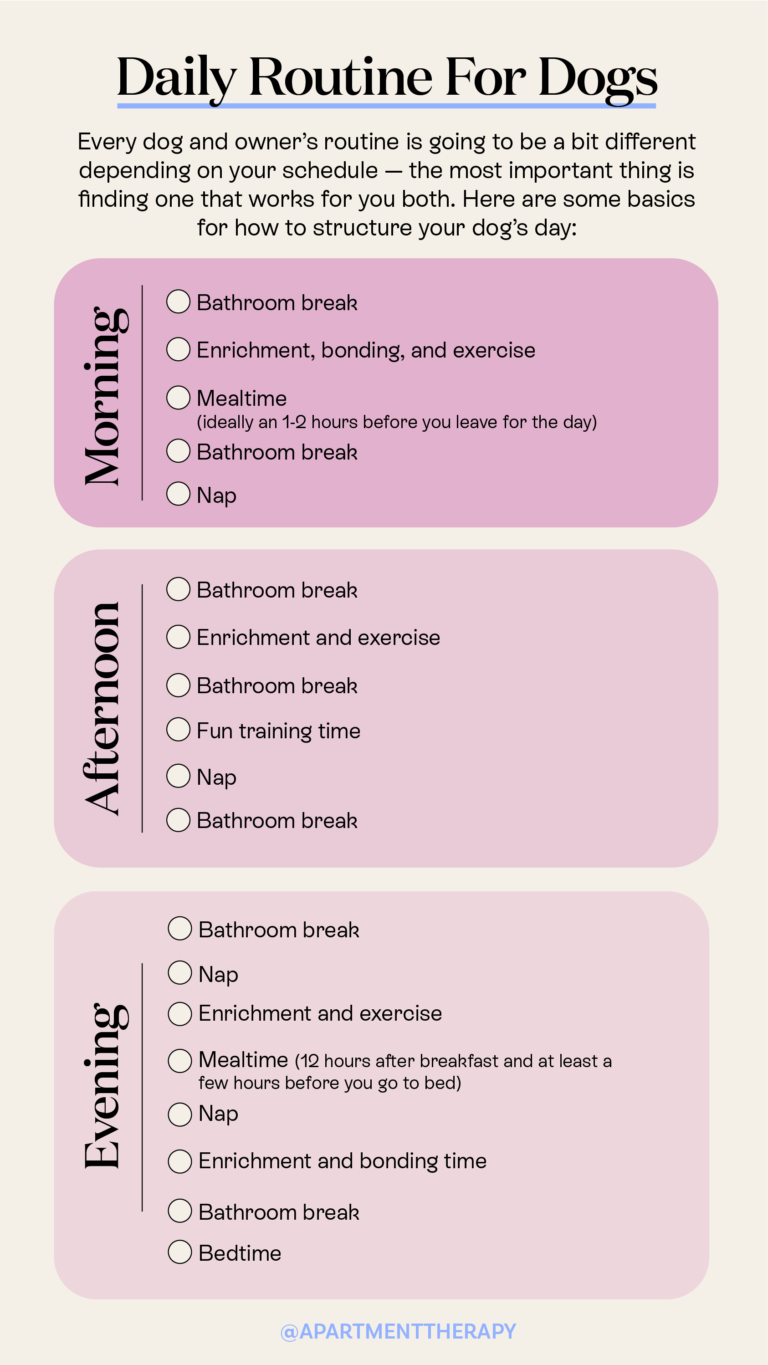Should You Kiss a Dog? The Ultimate Guide to Safe Canine Affection
Understanding the risks, benefits, and safer alternatives to showing your furry friend love
The truth is, millions of dog owners around the world engage in this display of mutual affection daily, and most never experience any negative consequences. However, like many aspects of pet ownership, the answer isn’t simply black and white. There are genuine health considerations to weigh against the emotional benefits of this intimate bonding behavior.
Whether you’re a new dog owner wondering about safe ways to bond with your puppy, or a longtime pet parent who’s never questioned this common practice, understanding both sides of the dog kissing debate will help you make informed decisions about how to express love for your canine companion while keeping both of you healthy and happy.
Understanding Dog Kisses: What’s Really Happening
Before diving into whether you should kiss your dog, it’s important to understand what’s actually happening when dogs lick us. That enthusiastic tongue action isn’t quite the same as human kissing – it’s a complex form of canine communication that serves multiple purposes in the dog world.
Dogs naturally use licking as a primary form of social interaction. In the wild, wolf pups lick their mothers’ faces to stimulate regurgitation of food, and this instinctual behavior carries over into domestic dog behavior. When your dog licks your face, they might be expressing submission, seeking attention, or simply showing affection in the way that feels most natural to them.
Dr. Sarah Mitchell, Veterinary Behaviorist: “When dogs lick humans, they’re often displaying what we call ‘appeasement behavior.’ It’s their way of saying ‘I love you’ and ‘please pay attention to me’ all at once. However, not all dogs enjoy receiving kisses from humans in return – it’s important to read your dog’s body language to ensure they’re comfortable with this type of affection.”
The act of dog licking behavior also releases endorphins in both dogs and humans, creating those feel-good sensations that strengthen the human-animal bond. This biological response explains why many people find dog kisses so emotionally satisfying – there’s actually a chemical basis for those warm, fuzzy feelings.
However, it’s crucial to recognize that dogs don’t understand human kissing in the same context we do. While they may enjoy the attention and physical closeness, the act of a human putting their face close to a dog’s face can sometimes be interpreted as threatening or overstimulating, depending on the individual dog’s personality and past experiences.
The Health Risks: What Every Dog Owner Should Know
Now let’s address the elephant in the room – or should we say, the bacteria in the mouth. Dog saliva health risks are real, though they’re often overstated in sensationalized media reports. Understanding the actual risks helps you make informed decisions rather than panicking about every slobbery kiss.
Bacterial Concerns
Dog mouths contain different bacterial ecosystems than human mouths. Bacteria such as Salmonella spp., Clostridium spp., E. coli and Campylobacter spp. can cause gastrointestinal symptoms in people, while Pasteurella species, commonly found in healthy dog mouths, can potentially cause infections in humans.
The good news? These illnesses generally aren’t carried in quantities large enough to pose a danger to most humans, and there is very little evidence that doggie kisses cause widespread health problems. Your immune system is remarkably effective at dealing with these everyday exposures.
Dr. Leni K. Kaplan, Cornell University College of Veterinary Medicine: “Pet owners shouldn’t let their dog kiss a person’s mouth, nose, and eyes, through which certain pathogens, including salmonella and E. coli, can be transmitted. However, the risk for healthy adults is generally very low.”
Parasitic Risks
Dog parasites transmission through licking is another consideration. Pets that have licked their anus can potentially pass the parasite eggs to humans during facial licking, including parasites like Giardia, hookworms, and roundworms.
While this might sound alarming, our immune systems and the enzymes in our mouths often kill off these infections before they become problematic. The key is maintaining good hygiene practices and keeping your dog’s health in check through regular veterinary care.
Who’s at Higher Risk?
Certain groups need to be more cautious about pet kissing safety:
Those people who are immunocompromised, including young children and the geriatric community, are at a higher risk of developing infections from dog saliva. If you fall into one of these categories, it doesn’t mean you can’t show affection to your dog – it just means you should consider alternative methods.
Pregnant women, people undergoing chemotherapy, and individuals with chronic illnesses should discuss pet interaction guidelines with their healthcare providers to ensure they’re taking appropriate precautions while still enjoying the benefits of pet ownership.
The Surprising Benefits of Human-Dog Bonding
Despite the health considerations, there are legitimate benefits to physical affection with your dog that shouldn’t be overlooked. The emotional benefits of dog ownership are well-documented, and appropriate physical contact plays a significant role in strengthening the human-animal bond.
The Oxytocin Connection
A number of studies have shown that when dogs and humans interact with each other in a positive way (for example cuddling) both partners exhibit a surge in oxytocin, a hormone which has been linked to positive emotional states. This powerful bonding hormone is the same one released during human romantic relationships and parent-child bonding.
What’s fascinating is that this human dog bonding response is unique among human-animal relationships. The oxytocin boost you get from interacting with your dog is comparable to what parents experience when bonding with their children – no wonder we feel such strong emotional connections to our canine companions!
Dr. Jennifer Martinez, Animal Behavior Specialist: “The mutual release of oxytocin during positive human-dog interactions creates a feedback loop of bonding. This isn’t just feel-good science – it has real implications for both human and canine wellbeing, reducing stress and promoting emotional health in both species.”
Stress Reduction and Mental Health Benefits
Dog-human contact actually improves owners’ stress levels as revealed by blood chemistry. The act of petting, hugging, or even safely interacting face-to-face with your dog can lower cortisol levels, reduce blood pressure, and trigger the release of mood-boosting neurotransmitters.
For many people dealing with anxiety, depression, or high-stress lifestyles, these pet therapy benefits provide genuine mental health support. The key is finding ways to achieve these benefits while minimizing health risks.
Building Trust and Communication
Physical affection helps establish trust and improves communication between you and your dog. Dogs who receive appropriate positive physical contact from their owners tend to be more confident, better socialized, and more responsive to training.
However, it’s important to note that kisses and hugs may cause dogs to feel more stressed than loved if the dog doesn’t enjoy this type of contact. Learning to read your dog’s body language is crucial for ensuring that your expressions of affection are truly welcomed.
Safe Alternatives: Showing Love Without the Risks
The great news is that you don’t have to choose between showing affection and staying healthy. There are numerous safe ways to show dog affection that provide all the bonding benefits without the potential health risks of mouth-to-mouth contact.
Physical Alternatives to Face Kissing
Dog petting techniques can be just as meaningful as kisses. Try gentle scratching behind the ears, slow belly rubs, or massage-like strokes along your dog’s back and sides. Many dogs find these types of touch even more pleasurable than face licking because they target areas dogs naturally enjoy having touched.
Forehead touches are another wonderful alternative. Gently pressing your forehead against your dog’s forehead creates intimate contact without the risks associated with mouth contact. This gesture mimics natural canine bonding behaviors and often feels very comforting to dogs.
Certified Dog Trainer Mike Rodriguez: “I always tell my clients that the best way to show affection to your dog is through activities they naturally enjoy. Instead of imposing human forms of affection, try playing their favorite games, going for special walks, or simply spending quality time together. Dogs often prefer these experiences over physical kisses.”
Eye Contact and Verbal Affection
When your dog looks at you, their brain releases the love hormone oxytocin, which is linked to positive emotional states. Sustained, gentle eye contact with your dog can trigger the same bonding hormones as physical touch, making it an excellent alternative to kissing.
Combine this with verbal affection – speaking to your dog in a warm, loving tone that they’ve learned to associate with positive experiences. Dogs are incredibly attuned to human vocal patterns and often find verbal praise just as rewarding as physical contact.
Activity-Based Bonding
Some of the strongest human-dog bonds are built through shared activities rather than physical affection. Consider these dog bonding activities:
Training sessions using positive reinforcement create collaborative experiences that build trust and communication. Even simple commands practiced with treats and praise strengthen your relationship while providing mental stimulation for your dog.
Interactive play, such as fetch, tug-of-war, or puzzle games, allows you to engage with your dog’s natural instincts and energy. These activities often provide more genuine enjoyment for your dog than passive physical affection.
Adventure bonding through hikes, beach visits, or exploring new environments together creates positive shared memories and experiences that deepen your connection in ways that simple physical contact cannot achieve.
When Dog Kisses Might Be Safer
If you absolutely cannot resist the occasional dog kiss, there are ways to make this practice safer for both you and your furry friend. Understanding dog oral hygiene and implementing smart precautions can significantly reduce risks.
Optimal Timing and Circumstances
The safest time for any mouth-to-face contact is when both you and your dog are healthy, and your dog’s mouth is as clean as possible. Avoid kisses immediately after your dog has eaten, drunk from outdoor water sources, or engaged in typical dog behaviors like eating grass or investigating other animals’ waste.
Consider the timing in relation to your dog’s bathroom habits as well. Pets that have licked their anus can potentially pass the parasite eggs to humans during facial licking, so allowing some time and perhaps encouraging your dog to drink fresh water before intimate contact makes sense.
Dr. Amanda Torres, Veterinary Medicine: “If pet owners are going to allow face licking, I recommend it only with healthy dogs who receive regular dental care and parasite prevention. And never allow licking of open wounds, cuts, or mucous membranes like the inside of your mouth or nose.”
Maintaining Your Dog’s Oral Health
Regular canine dental care isn’t just good for your dog’s health – it also makes any accidental or intentional face contact safer for you. Brushing your dog’s teeth regularly, providing dental chews, and scheduling professional cleanings can significantly reduce the bacterial load in their mouth.
Keep up with regular veterinary checkups that include oral health assessments. Many systemic health issues first manifest in the mouth, so maintaining good oral health is beneficial for your dog’s overall wellbeing and your safety.
Immediate Hygiene Practices
If your dog does lick your face, whether intentionally or accidentally, simple hygiene practices can minimize any risks. Wash your face with soap and water, particularly around the mouth, nose, and eyes where certain pathogens, including salmonella and E. coli, can be transmitted.
Avoid touching your face with unwashed hands after petting your dog, and always wash your hands thoroughly after any intensive cuddling or play sessions. These basic practices significantly reduce the risk of any bacterial or parasitic transmission.
Reading Your Dog’s Comfort Level
One crucial aspect of the kissing question that’s often overlooked is your dog’s perspective. Understanding dog body language is essential for ensuring that your expressions of affection are actually welcomed and don’t cause stress or discomfort.
Signs Your Dog Enjoys Affection
Dogs who genuinely enjoy human affection typically display relaxed body language. Look for soft, relaxed eyes, a gently wagging tail, and a body posture that leans into your touch rather than pulling away. Some dogs will actively seek out physical contact, nudging your hand for more petting or positioning themselves for belly rubs.
Happy vocalizations like soft whining, contented sighs, or gentle “talking” can indicate that your dog is enjoying the interaction. Many dogs will also make eye contact and appear alert but calm during positive physical interactions.
Certified Animal Behaviorist Dr. Lisa Chen: “Every dog has individual preferences for physical affection. Some dogs love face-to-face contact, while others find it overwhelming or threatening. The key is to start slowly, watch your dog’s reactions, and respect their boundaries. A dog who truly enjoys affection will actively participate rather than just tolerating it.”
Warning Signs of Discomfort
Recognizing when your dog is uncomfortable with physical affection is crucial for maintaining a healthy relationship. Dog stress signals include lip licking (when not related to food), yawning when not tired, averting their gaze, or trying to move away from the interaction.
More obvious signs of discomfort include stiffening of the body, whale eye (showing the whites of their eyes), low growling, or snapping. If you observe any of these behaviors, it’s important to immediately give your dog space and reconsider your approach to physical affection.
Some dogs may freeze or become very still during unwanted physical contact. This isn’t submission or enjoyment – it’s often a stress response. A truly comfortable dog will remain naturally animated and responsive during positive interactions.
Building Positive Associations
If your dog seems uncomfortable with close physical contact, you can work on building positive associations gradually. Start with less invasive forms of affection and pair them with things your dog loves, like treats, favorite toys, or exciting activities.
Never force physical affection on a reluctant dog. Instead, allow them to approach you and initiate contact when they’re comfortable. This builds trust and helps ensure that your interactions remain positive for both of you.
 Special Considerations for Different Situations
Special Considerations for Different Situations
The question of whether to kiss your dog becomes more complex when we consider various special circumstances that might affect both the safety and appropriateness of this behavior.
Households with Children
Children and pet safety requires extra consideration because young people may be at higher risk for infections and may not understand appropriate boundaries with pets. Teaching children safe ways to interact with dogs protects both the child and the pet.
Young children often want to mimic adult behaviors they observe, so if they see adults kissing the family dog, they’re likely to do the same. However, children’s developing immune systems make them more susceptible to any potential infections, and they may not recognize when a dog is uncomfortable with close contact.
Educate children about appropriate ways to show affection to dogs, such as gentle petting, offering treats, or playing appropriate games. Supervise interactions between small children and dogs to ensure both remain safe and comfortable.
Pediatric Veterinarian Dr. Rachel Kim: “I recommend that families with young children establish clear rules about pet interaction from the beginning. Children can absolutely have wonderful, affectionate relationships with dogs without engaging in face-to-face contact. Teaching respect for the animal’s space and appropriate ways to show love benefits everyone in the household.”
Multi-Pet Households
In multi-pet households, the dynamics of affection become more complex. Dogs may compete for attention or become jealous if they perceive unequal treatment. Additionally, different pets may have varying comfort levels with physical affection.
Consider how showing intense physical affection to one pet might affect others in the household. Some dogs may become protective or anxious when they see their owners engaging in close contact with other pets.
Senior Dogs and Puppies
Age can significantly impact both the safety and appropriateness of kissing your dog. Senior dog care often involves considering compromised immune systems, dental issues, or increased sensitivity to handling.
Older dogs may have more bacteria in their mouths due to dental disease, making any mouth contact riskier. They may also be less tolerant of close physical contact due to arthritis, vision problems, or general discomfort.
Puppies, on the other hand, are still developing their immune systems and may carry different bacterial loads than adult dogs. They’re also in the process of learning appropriate social behaviors, so establishing good boundaries early is important for long-term success.
Newly Adopted Dogs
With newly adopted pets, it’s especially important to move slowly with physical affection. These dogs may have unknown health histories, behavioral backgrounds, or trauma that affects their comfort with close contact.
Allow new dogs time to adjust to your household before introducing intensive physical affection. Build trust gradually through consistent, positive interactions that don’t involve intimate contact until you better understand their personality and health status.
Making the Right Decision for Your Family
Ultimately, the decision about whether to kiss your dog is a personal one that should be based on accurate information, your individual circumstances, and your dog’s preferences. There’s no universal right answer, but there are ways to make an informed choice that works for your specific situation.
Assessing Your Risk Factors
Consider your personal health situation honestly. Are you or any family members immunocompromised, elderly, very young, or dealing with chronic health conditions? If so, the safer approach might be to enjoy the many other ways of bonding with your dog.
Evaluate your dog’s health and behavior patterns. Is your pet up-to-date on all veterinary care, including dental health? Do they display good hygiene habits, or are they constantly getting into situations that expose them to bacteria and parasites?
Dr. Michael Thompson, Family Medicine: “I tell my patients that the decision about pet kisses should be made considering the whole picture – their health, their pet’s health, and their comfort level with the small but real risks involved. For most healthy adults with healthy pets, the risks are minimal, but individuals should make informed choices based on their circumstances.”
Creating Household Rules
If you decide to allow some face contact with your dog, establish clear guidelines that everyone in the household understands and follows. This might include rules about when such contact is appropriate, proper hygiene before and after, and understanding your dog’s consent signals.
Consider having different rules for different family members based on their ages, health status, and comfort levels. What works for healthy adults might not be appropriate for young children or elderly family members.
Regular Reassessment
Remember that circumstances change over time. Your dog’s health, your family’s health, and your living situation may evolve in ways that affect the appropriateness of intimate physical contact with your pet.
Be willing to adjust your practices as needed. A approach that worked when your dog was young and healthy might need modification as they age or if they develop health issues.
The Bottom Line: Love Doesn’t Require Lips
After exploring all aspects of this common pet parenting dilemma, the conclusion isn’t that you should never kiss your dog – it’s that you should make informed decisions based on accurate information rather than fear or assumptions.
The human-animal bond is one of the most powerful and beneficial relationships we can experience. The emotional and psychological benefits of pet ownership are well-documented and significant. However, these benefits don’t require mouth-to-mouth contact to be realized.
For most healthy adults with healthy, well-cared-for dogs, occasional face licking probably won’t cause problems. A simple lick or kiss from a dog is unlikely to cause a problem, however, if that lick or kiss occurs on an open wound or to an individual with an immature or compromised immune system, it can spread bacteria or infection.
The key insights to remember:
Risk exists but is generally low for healthy individuals with healthy pets. The sensationalized stories you might read online don’t reflect the everyday reality for most pet owners, but that doesn’t mean the risks should be completely ignored.
Your dog’s comfort matters as much as yours. Kisses and hugs may cause dogs to feel more stressed than loved if they don’t enjoy this type of interaction, so always prioritize your pet’s preferences.
There are countless ways to bond with your dog that don’t involve potential health risks. From training sessions and adventure walks to gentle massage and interactive play, the options for showing love are limited only by your creativity.
Individual circumstances should guide your decision. What’s right for a healthy young adult might not be appropriate for someone with compromised immunity or a household with small children.
Final Expert Perspective – Dr. Jennifer Walsh, Veterinary Medicine: “The most important thing is maintaining the health and happiness of both you and your pet. There are so many wonderful ways to express love and build bonds with dogs that don’t involve potential health risks. Focus on what makes both you and your dog comfortable and happy – that’s where the real magic of the human-animal bond lives.”
Remember, the goal isn’t to eliminate all physical affection from your relationship with your dog – it’s to find ways of expressing love that feel good for both of you while minimizing unnecessary risks. Whether that includes the occasional dog kiss or focuses entirely on alternative forms of affection, the choice is yours to make based on the information you now have.
The love between humans and dogs has existed for thousands of years, long before we understood bacteria or immune systems. That bond doesn’t depend on any single behavior or expression of affection. It’s built on trust, consistency, care, and mutual respect – all of which can be expressed in countless safe and meaningful ways.
Your dog doesn’t need your kisses to know they’re loved. They know it from the way you care for their needs, provide for their comfort, engage with their personality, and include them in your daily life. They feel it in your gentle touch, your excited voice when you come home, and your patience when teaching them new things.
The question isn’t really whether you should kiss your dog – it’s how you can best express the love you feel in ways that honor both your wellbeing and theirs. With so many wonderful options available, you’re sure to find approaches that feel authentic, safe, and deeply satisfying for both members of your interspecies family.
After all, the best kind of love is the kind that makes everyone involved feel safe, respected, and genuinely cared for – and that’s something you can absolutely achieve without a single slobbery kiss.


 Special Considerations for Different Situations
Special Considerations for Different Situations





